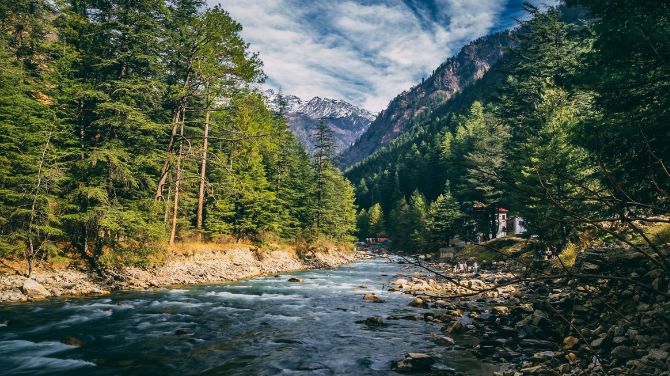Ayodhya, located on the serene banks of the Sarayu River in Uttar Pradesh, is an iconic destination for pilgrims and history enthusiasts. Revered as the birthplace of Lord Rama, this city is filled with temples, ghats, and heritage sites narrating tales from the Ramayana and India’s ancient past. Here is a guide to the best places to visit in Ayodhya for a spiritually enriching and culturally immersive experience.
1. Ram Janmabhoomi Temple
The foremost among all places to visit in Ayodhya is the Ram Janmabhoomi Temple, built at the sacred site believed to be the birthplace of Lord Rama. The grandeur of its architecture, the devotion of pilgrims, and the spiritual energy surrounding the temple make it an unmissable part of any Ayodhya journey. Morning and evening aarti ceremonies are soul-stirring and create an atmosphere filled with devotion and peace.
2. Hanuman Garhi
Close to Ram Janmabhoomi is Hanuman Garhi, a temple dedicated to Lord Hanuman. Located atop a small hillock with around 76 steps, this temple houses an idol of Hanuman holding young Lord Rama in his lap. Devotees believe that visiting Hanuman Garhi before other temples brings blessings for a complete pilgrimage. The temple also offers panoramic views of Ayodhya city.
3. Kanak Bhawan
Kanak Bhawan, located near Hanuman Garhi, is a beautiful temple gifted to Goddess Sita by Queen Kaikeyi after her marriage to Lord Rama. The temple houses richly adorned idols of Rama and Sita with golden crowns and is decorated with intricate designs, making it one of the most aesthetic places to visit in Ayodhya for devotees and travellers interested in temple architecture.
4. Nageshwarnath Temple
This ancient temple dedicated to Lord Shiva is believed to have been established by Kush, the son of Lord Rama. Nageshwarnath Temple is especially significant during Mahashivratri when it is adorned with flowers and lamps as thousands of devotees gather for rituals. The temple’s towering spires and tranquil atmosphere reflect Ayodhya’s ancient Shaivite heritage.
5. Treta Ke Thakur
Treta Ke Thakur is a historical temple marking the site where Lord Rama performed the Ashwamedha Yagna after his return to Ayodhya. The temple houses idols of Rama, Sita, Lakshmana, Bharat, Shatrughna, and Hanuman carved from a single block of black sandstone. It remains open mainly on special occasions, so check in advance to include this spiritual marvel in your itinerary.
6. Guptar Ghat
Among the peaceful places to visit in Ayodhya is Guptar Ghat, situated on the banks of the Sarayu River. It is believed that Lord Rama took Jal Samadhi here and left his earthly form. The ghat is serene, ideal for meditation, prayer, and enjoying early morning or sunset boat rides on the calm river. It is a perfect place to experience Ayodhya’s spiritual tranquillity away from temple crowds.
7. Ramkatha Park
Ramkatha Park is an open-air cultural park hosting devotional music performances, Ramleela plays, and folk events, especially during Ram Navami and Deepotsav. The park’s landscaped gardens and peaceful ambience make it ideal for pilgrims and tourists wanting to unwind while experiencing Ayodhya’s spiritual and cultural traditions.
8. Mani Parvat
Mani Parvat is a small hillock associated with legends from the Ramayana. It is believed to be a fragment of the Sanjeevani mountain carried by Hanuman to save Lakshmana. The site also houses a Buddhist stupa and a small temple at its peak. Climbing to the top offers panoramic views of Ayodhya city and the surrounding landscape, making it a unique spiritual and scenic spot.
9. Tulsi Smarak Bhawan
Dedicated to Goswami Tulsidas, the author of Ramcharitmanas, Tulsi Smarak Bhawan is a museum and research centre with a library, manuscripts, and an auditorium. Ramayana recitations and Ramleela performances are organised here regularly, offering deeper insights into the epic’s cultural influence on Indian society. It is a must-visit for literature and spirituality enthusiasts.
10. Dashrath Mahal
Dashrath Mahal, located near Ram Janmabhoomi, is believed to have been the palace of King Dashrath, Lord Rama’s father. Today, it is a vibrant temple complex housing beautifully decorated idols of Rama, Sita, Lakshmana, Bharat, and Shatrughna. Devotional chants, flowers, and traditional rituals make the temple spiritually uplifting and a glimpse into the royal legacy of Ayodhya.
Best Time to Visit Ayodhya
The ideal time to explore these places to visit in Ayodhya is between October and March when the weather is pleasant. Festivals like Ram Navami and Deepotsav add grandeur to the city, with processions, lights, and cultural events that enhance your travel experience.
How to Reach Ayodhya
- By Air: Ayodhya Airport (Maharishi Valmiki International Airport) connects the city to major metros like Delhi and Mumbai.
- By Train: Ayodhya Railway Station is well connected to cities such as Lucknow, Varanasi, Prayagraj, and Gorakhpur.
- By Road: Regular buses and taxis operate from nearby cities, making road travel convenient.
Final Thoughts
From the grandeur of Ram Janmabhoomi to the serene ghats of the Sarayu River, Ayodhya offers a spiritually fulfilling and culturally rich journey. Whether you are a pilgrim seeking divine blessings or a traveller exploring India’s mythological heritage, these best places to visit in Ayodhya will leave you with deep peace and timeless memories.















Leave a comment